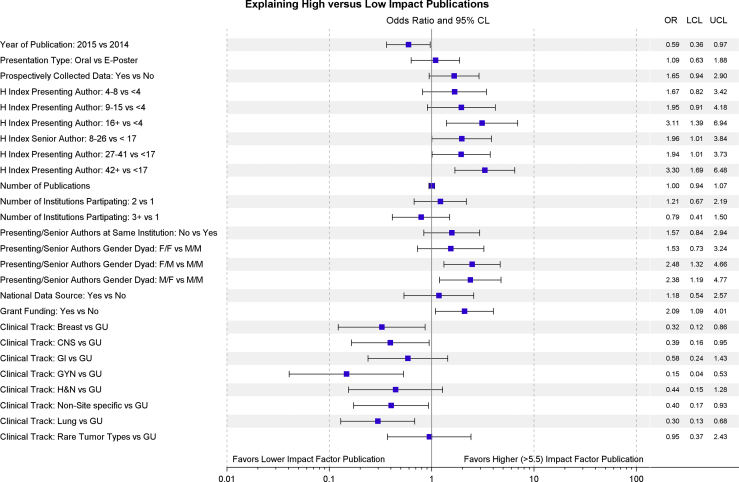
To generate insights concerning the function of gender in analysis mentorship, we analyzed traits of abstracts chosen for oral and poster dialogue displays on the American Society for Radiation Oncology annual assembly and subsequent high-impact publications.
Clinical radiation oncology abstracts chosen for oral and poster dialogue displays on the American Society for Radiation Oncology annual conferences in 2014 and 2015 had been reviewed.
A multivariable logistic regression mannequin evaluated components related to subsequent higher-impact publications amongst abstracts that led to manuscript publications. The major impartial variable was the presenting-senior (final) creator gender dyad (divided into Four teams primarily based on gender of presenting and senior authors, respectively; eg, “MF” signifies male presenting and feminine senior).
Dyads had been categorized as MF, FM, MM, or FF.ResultsData had been derived from 390 oral and 142 poster discussions. Presenting and senior creator pairings had been MM for 286 (53.8%), FF for 67 (12.6%), MF for 84 (15.8%), and FM for 94 (17.7%) abstracts. Overall, 403 abstracts led to subsequent publications, of which 52.1% (210) had been in a higher-impact journal. Eventual publication in a higher-impact journal was considerably related to senior creator H-index (odds ratio [OR] 3.30 for H ≥ 41 vs < 17; group P = .007), grant assist for the research (OR 2.09 for funded vs not, P = .0261), and with the presenting and senior creator gender pairing (group P = .0107). Specifically, FM pairings (OR 2.48; 95% confidence interval, 1.32-4.66) and MF pairings (OR 2.38; 95% confidence interval, 1.19-4.77) had greater odds of high-impact publication than MM pairings, whereas there was no important distinction in this consequence between FF and MM pairings.
Although unmeasured confounding stays doable, MF and FM dyads of presenting and senior authors had been extra doubtless than MM dyads to acquire journal publication in a higher-impact journal. Institutions and the career ought to assist the event and upkeep of respectful, collaborative cross-gender mentorship.

COVID-19: Global radiation oncology’s focused response for pandemic preparedness.
As the worldwide COVID-19 pandemic escalates there’s a want inside radiation oncology to work to assist our sufferers in one of the best ways doable. Measures are required to cut back an infection unfold between sufferers and throughout the workforce.
Departments want contingency planning to create capability and proceed important therapies regardless of a lowered workforce.
The #radonc neighborhood held an pressing on-line journal membership on Twitter in March 2020 to debate these points and create some consensus on essential subsequent steps. There had been 121 international contributors. This doc summarises these discussions round themes of an infection prevention, rationalisation of workload and working follow in the presence of an infection.
